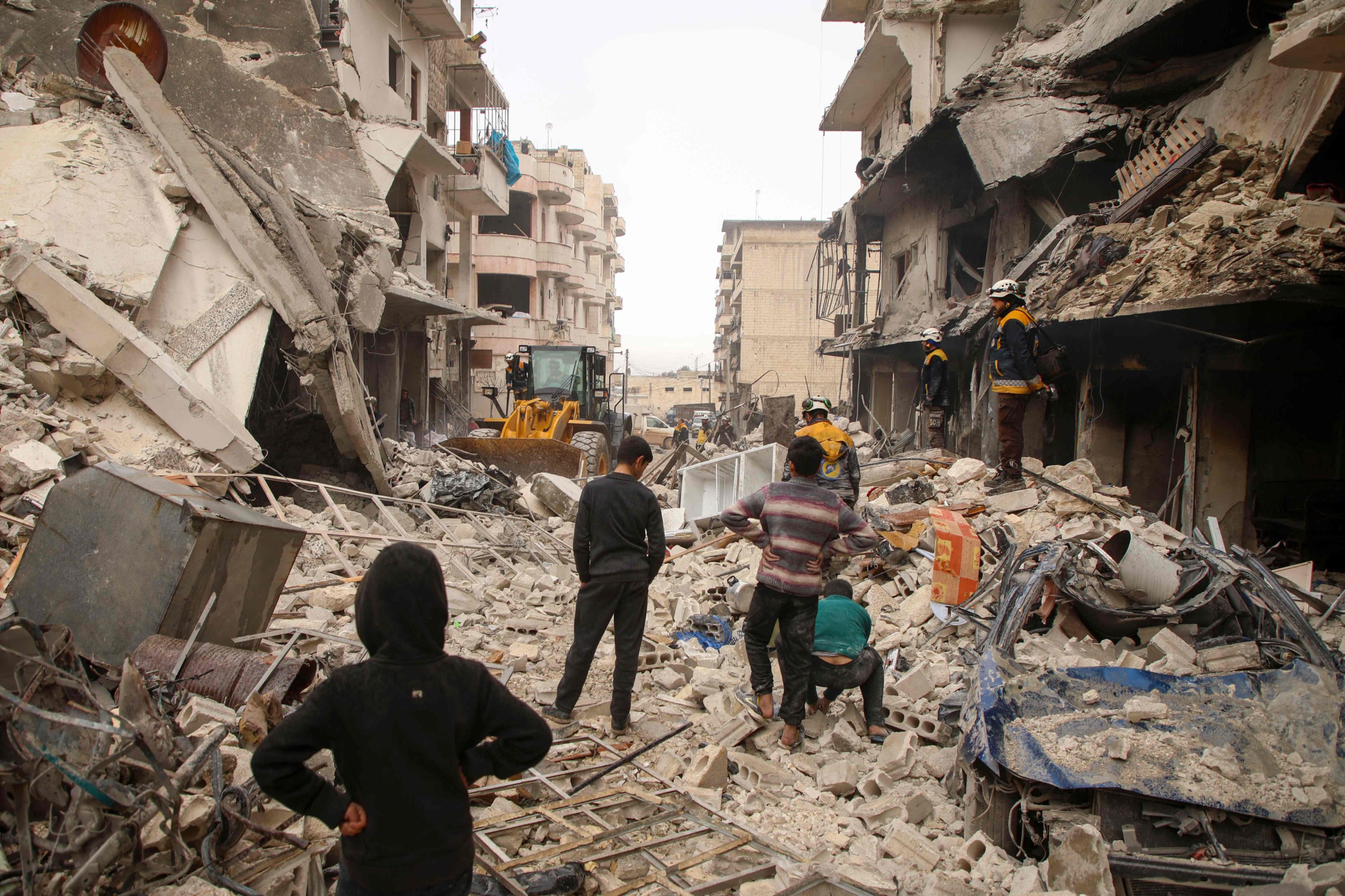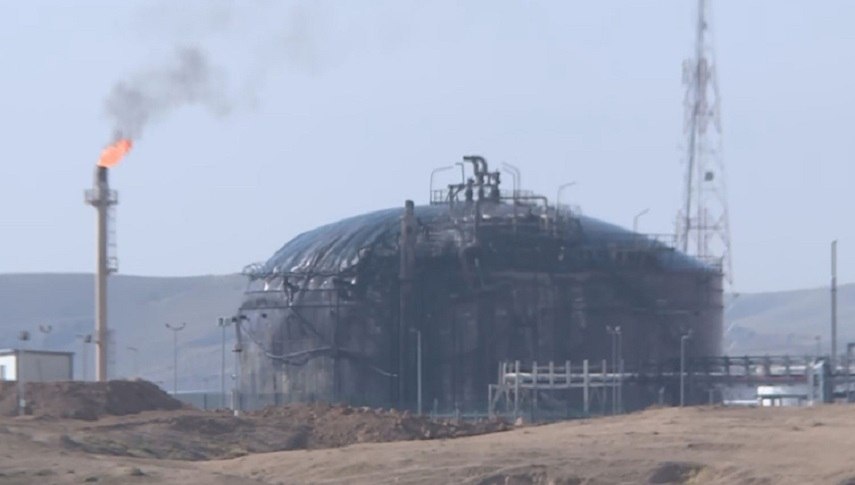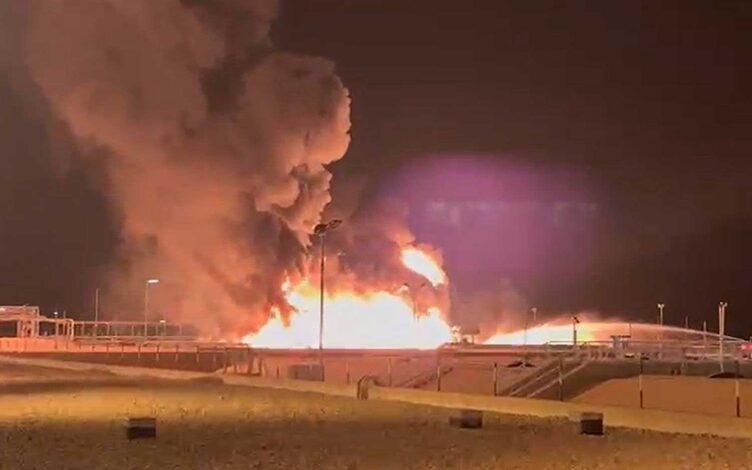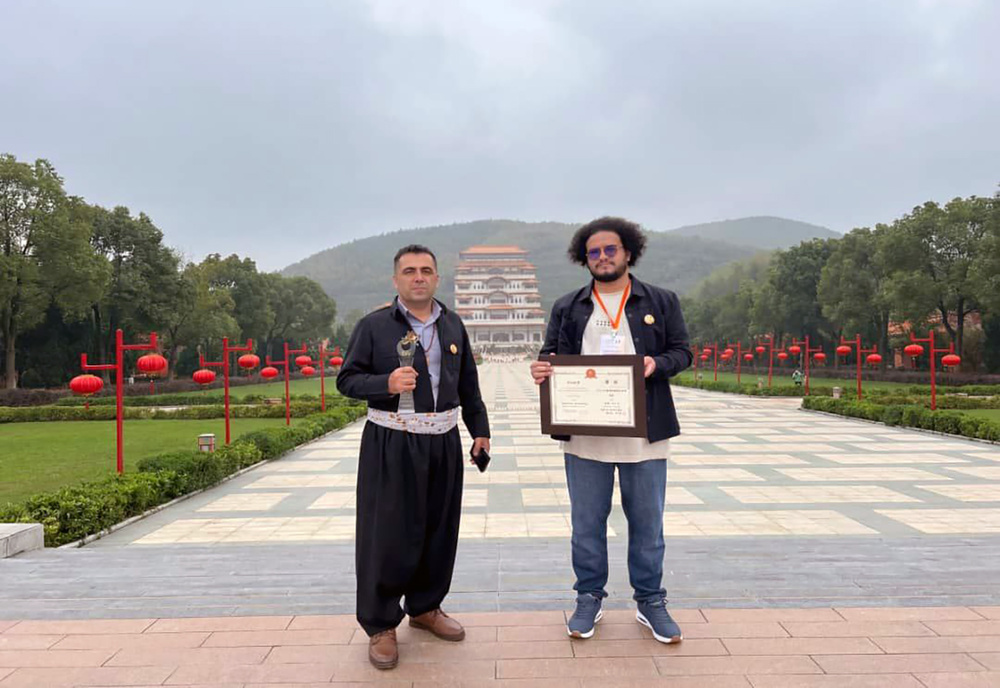War is a terrible reality. More than 4,361 people, including soldiers and civilians, were killed in Syria last year. At the beginning of this year, according to some estimates, around a 1,000 people have already lost their lives. On March 15, the Syrian war reached its infamous 13th birthday. Few major wars in recent decades have lasted so long but a solution is still not in sight, even though the situation in Syria and the surrounding countries threatens a major humanitarian disaster. For years, the civil war in Syria has been a low-intensity war and the country is divided into several areas that are effectively states within states with loose borders depending on the course of military operations.
Divided Syria
At the time of writing, the largest part of the internationally recognized territory of Syria (about 2/3) is under the control of the legal and internationally recognized government of President Bashar al-Assad in Damascus. The government of the Syrian Arab Republic controls major cities such as Homs, Aleppo, Damascus province as well as the provinces of Sweidu, Daraa and Quneitra in the south, the central province of Homs and most of neighboring Hama, as well as all of Tartus and most of Latakia province on the west coast.
Much of Aleppo province in the north is also under government’s control, as are parts of Raka and Deir ez-Zor provinces in the east. About a quarter of the Syrian territory is under the control of the Kurdish Autonomous Administration of Northern and Eastern Syria (AANES) or Rojava. The Kurds established a semi-autonomous administration in the area and gradually expanded the territory with the help of the US. They control most of the province of Raqqa including the city itself, half of the neighboring province of Deir ez-Zor and part of the province of Aleppo in the north. The Kurdish forces (SDF) control Hasakeh province in the northeast, although Syrian government forces are also present in some areas, including the cities of Hasakeh and Qamishli.
Other opposition forces control about 10% of the territory. The anti-Turkish opposition Syrian Transitional Government (SIG) and Turkish occupation forces have strongholds in northern Syria. In northwestern Syria, the province of Idlib, there are troops of the opposition pro-Western Free Syrian Army (FSA) and the US military. The headquarters of the opposition group, the Syrian Salvation Government, supported by the terrorist Islamist organization, Hayat Tahrir al-Sham, is also in Idlib province.
Of the other opposition groups ISIL stands out. It was defeated in 2019, but recently returned to the Syrian scene. ISIL fighters are particularly active in the vast Syrian desert, including Deir ez-Zor province, launching attacks on Kurdish and government forces. We should not forget that the Golan Heights has been controlled by Israel since the Six-Day War in 1967, but no one questions the Israeli occupation.
From protests to war
The agony began in the form of peaceful protests against the Assad government in March 2011. The Syrian protests were an integral part of the Arab Spring that spread across much of the Middle East that year. The protesters gradually became violent, as did the government’s security forces, and the initial peaceful rebellion soon turned into a merciless civil war, which was further complicated by the intervention of foreign forces (USA, EU, Turkey, Russia, Iran, Israel…) so Syria became the scene of a mini World War III.
Although the West supported opposition groups that were mainly Islamist, and later Kurdish forces in the fight against ISIL, Assad’s government survived thanks to the support of Russia and Iran. Turkey has supported a number of pro-Turkish Syrian opposition groups. Israel has carried out airstrikes against the Lebanese militant group Hezbollah, Iranian and Syrian Arab Army (SAA) forces. Islamist groups such as Al-Qaeda, ISIL and Tahrir al-Sham have added particular cruelty to the conflict. Over the years, the battlegrounds have stabilized in the war-torn country.
Despite the gradual recapture of most of the territory previously held by anti-government rebels, the SAA and its Russian and Iranian allies continue to fight long and exhausting battles, particularly in the northwest and northern parts of the country, where various Islamist groups, but also Turkey and the US, still control certain areas.
A new escalation of the Syrian war
The Syrian war has entered its 14th year, but it is heating up again while the world’s attention is focused on other crises – the war in Ukraine and the war in the Holy Land. The UN-backed institution, the Independent International Commission of Inquiry on Syria, reported that between October last year and this spring, Syria experienced the worst wave of violence since 2020.
The latest wave of violence began in October 2023 with a drone attack on a graduation ceremony at a military academy in the city of Homs under the control of the government in Damascus, in which dozens of people died. The Syrian government and allied Russian forces then began bombing the north-west of the country under the control of the opposition, and not only military strongholds but also civilians were killed in these attacks. Elsewhere, there are increasing Israeli attacks targeting Iranian bases and Iranian Revolutionary Guard Corps units in parts of Syria controlled by the Assad government. Israeli attacks also regularly hit civilians in many cases.
Turkey has stepped up its attacks on US-backed Kurdish forces in northeastern Syria, while militants from underground cells of the dormant ISIL have launched sporadic attacks in different parts of the country. There has also been unrest in opposition-held areas in recent weeks, with protests erupting in Idlib against the leadership of the al-Qaeda-linked Tahrir al-Sham group that governs the area.
Thousands of people took to the streets of rebel-held northwest Syria to mark 13 years of rebellion, chanting slogans against President Assad and the region’s jihadist rulers. A former al-Qaeda affiliate, Tahrir al-Sham (HTS), now controls a significant swath of the northwest, where hundreds have protested against its leader Abu Mohammad al-Jolani in recent weeks. Hundreds of protesters paraded through the city of Idlib, many of them waving placards that read: “Down with Jolani… Assad.”
Terrible consequences of war
Since the outbreak of war in early 2011, the humanitarian crisis in Syria has caused immense suffering to tens of millions of people. The war, in which about half a million people lost their lives, displaced about 60% (13,7 million) of the country’s pre-war population of 23 million. The events in Syria have generated the world’s largest refugee crisis and the largest internal displacement crisis. Particularly dramatic is the December announcement by the UN agency World Food Program (WFP) that it will halt its main aid program for Syria in 2024.
David Carden, the UN’s deputy regional humanitarian coordinator for the crisis in Syria, said during a recent visit to northwestern Syria that the UN humanitarian response plan for 2023, for which more than 5 billion dollars was requested, received only 38% of the total amount. The funds received are the lowest since the UN started asking for donations for humanitarian crises.
The United Nations announced in mid-March that 16.7 million people in Syria need humanitarian aid to survive. More than 12 million Syrians do not have regular access to food. When the number of Syrian refugees living in the Middle East region is added, the total need for humanitarian aid rises to over 27 million. Available resources in Syria have continued to dwindle, along with the ability to provide livelihoods for most of the population.
“More than 90 percent now live in poverty, the economy is in free fall amid tightening sanctions, and growing lawlessness is fueling predatory practices and extortion by armed forces and militias,” said Paulo Pinheiro, chair of the UN’s Independent International Commission of Inquiry on Syria. The commission said in a report released in mid-March that in recent months the country has experienced a wave of violence not seen since 2020, warning that the warring parties have carried out attacks on civilians and infrastructure that amount to war crimes. Before 2011, less than 10% of the population was poor in Syria.
Waves of exiles
War actions resulted in the destruction developed cities such as Idlib, Aleppo and Raqqa. This resulted in waves of exiles. Once people are forced to leave their homes and the social community in which they are used to functioning, that is, when they become exiles, they become extremely vulnerable. Many of them escaped with only basic personal belongings that fit into bags on the way to the unknown. Many lost the necessary documents when fleeing from terrorist organizations such as ISIS and HTS, which made it difficult for them to move within the country due to roadblocks and checkpoints, as well as entering foreign countries.
Many Syrians, even those who managed to reach neighboring countries where war operations are not taking place (most of them are in Lebanon, Iraq and Turkey), tell the media that they do not feel safe even in such an environment. Their personal safety is at risk because they are the targets of exploitation by employers, as well as various swindlers, mobsters and other criminals, especially Syrian women and girls who are targets of sexual violence.
Trouble after trouble
In addition to the protracted war, which is a deadly phenomenon in itself, Syria is also faced with other very complex problems: destroyed infrastructure, outbreaks of cholera and other diseases, and natural disasters such as droughts and last year’s earthquake. Syria’s plight was exacerbated by the devastating 7.8-magnitude earthquake on February 6, 2023, which killed more than 59,000 people in Turkey and Syria. About 6,000 people have been killed in Syria alone, mostly in the northwest, where most of the 4.5 million people rely on humanitarian aid to survive.
UN agencies and other humanitarian organizations are struggling to fund humanitarian programs that provide aid and some salvation to the suffering Syrian people, blaming weak donor interest, the pandemic and other conflicts that have erupted in recent years and have diverted the attention of the world public.
The dire state of the Syrian economy
The once vital economy was hit hard by the war. Last year, GDP fell by 5.5%. In recent years, the Syrian financial system has collapsed. The corona crisis resulted in an even stronger economic decline and a fall in the value of the national currency, the Syrian pound. In October 2020, the average family basket of food cost 236% more than the previous year.
In 2022, the UN’s World Food Program (WFP) estimated that 12.4 million Syrians were on the brink of starvation, a dramatic increase compared to the previous year. There has been no improvement since then. Energy and food prices have risen sharply due to the war in Ukraine. Last year, the inflation rate was 90%. Basic goods have become more difficult to afford for the most vulnerable Syrians, many of whom cannot earn a steady income and keep up with current inflation rates, creating a vicious cycle.
Since the beginning of this year, Syria has experienced an inflation rate of 100%. Record fuel and food prices are having a devastating effect on the country’s most vulnerable people. Families are forced to choose between buying food, medicine and fuel or financing their children’s education. The United Nations Office for the Coordination of Humanitarian Affairs (UNOCHA) estimates that currently 85% of families in Syria cannot meet their basic needs.
More than a decade of conflict has crippled the economy, leading to an increase in drug trafficking and other illegal activities. Some observers point out that Syria, especially the area under the control of the legal government, has become a regional center for the production and smuggling of Captagon, which is a cheaply produced and addictive drug similar to amphetamine.
“The low winter temperatures have further increased the vulnerability of the Syrian population, as many cannot afford to buy fuel to heat their homes,” said the director of the Syrian branch of the non-profit organization Action Against Hunger, Darius Zietek. “We used to stay with between 10 and 15 families in the same room, without privacy. Now, thanks to these solar panels installed by Action Against Hunger, we have locks and lighting in every room and every family has its own space. Life has somehow returned to normal,” said Duha al-Ashkar, a mother of four who found refuge with 400 other families in the renovated school.
Water has been a rare commodity in Syria in recent years. Lack of water not only affects food production and the livelihood of farmers and herders, but also poses a serious threat to the health of the population. Many families are forced to reduce water consumption or drink dirty water, leading to epidemics like last year’s cholera outbreak.
The suffering of women and children
The war destroyed social and family cohesion. Women and children are the most affected by the breakdown of the social system. Women are particularly vulnerable. Gender-based violence, domestic violence and sexual abuse in general have increased across the country. Many women report that their husbands resort to violence more quickly because the war has a detrimental effect on their behavior.
The conflict has led to a huge number of households headed by women because their husbands have died, become disabled or are unemployed. The number of girls marrying early is on the rise, many young people are recruited into armed groups or enter the labor market. Child labor is often a family obligation so that children can help their families survive. The psychological effects of war are terrible. UNOCHA reported that more than 25% of Syrian children show some signs of psychological distress. The number of children attending school has decreased. Last year, almost 2.5 million Syrian children did not attend school.
A March 2019 UNICEF report reveals that 40% of school infrastructure in Syria has been destroyed in the war, greatly hampering education opportunities. Before the war, Syria had a high primary education attendance rate of 97%. The problem is that many Syrians who have not completed their education now have children who also face the threat of not being able to get an education. According to UN data, there are 4.2 million people in northwestern Syria who need help, and 2 million of them are children, one million of whom do not go to school. According to UNICEF, nearly 7,5 million children in Syria will need humanitarian assistance in 2024, more than at any other time during the conflict.
Lack of political will to end the war
Due to the complexity of the conflict and the cruelty that characterizes the bloody war, a final solution is nowhere in sight for Syria even now, at the beginning of 2024. “It is difficult to imagine a sustainable political solution in Syria while the fighting is still going on.
The complex nature of the Syrian conflict makes finding sustainable solutions extremely challenging. This is a multifaceted war, and ending it requires an international consensus, which is obviously difficult to achieve,” asserted John Saleh, a Syria researcher based in Washington. Recently, the UN Secretary General, Antonio Guterres, called for an end to the war by implementing UN Security Council Resolution 2254. It was adopted in 2015 and aims to end the Syrian conflict by implementing a political transition. The UN then sponsored several rounds of talks between government and opposition representatives with the goal of drafting a new Syrian constitution. UN-led peace talks on Syria have shown no signs of life in recent years.
Meanwhile, Assad’s government has regained control of most of the country and emerged as the unofficial war victor. It has also largely regained its international legitimacy by returning to the auspices of the Arab League (after a suspension of almost 12 years) and other multilateral organizations.
Several Arab countries in the region have also renewed ties with Assad, including Saudi Arabia, Jordan, the UAE, Bahrain. With Russia and China, permanent members of the UN Security Council, blocking UN resolutions condemning the Assad regime, and given the weak state and fiery division of the rebels, there is little prospect of a resolution to the Syrian crisis without Assad, who will definitely be Syria’s future, if not him personally, then his Baath party.
The only solution to end the civil war is a certain compromise between the warring forces. Instead of guns, cannons and drones, the warring parties will need to embrace less bloody tools of political battle, such as diplomatic negotiations that will result in an agreement about new political order. In the future, instead of weapons, political parties should fight the battle in elections. Whatever the internal political arrangement of Syria will be, the country should also receive international guarantees so that a new war does not occur.
Eurasia Review
By Matija Seric

Although the global mainstream media has consciously and persistently ignored the Syrian Civil War for several consecutive years, as if it was over, it continues. Although the average observer would conclude that the war in Syria is over because newspapers and websites don’t write about it, this is unfortunately not true.
News ID 159496






Your Comment